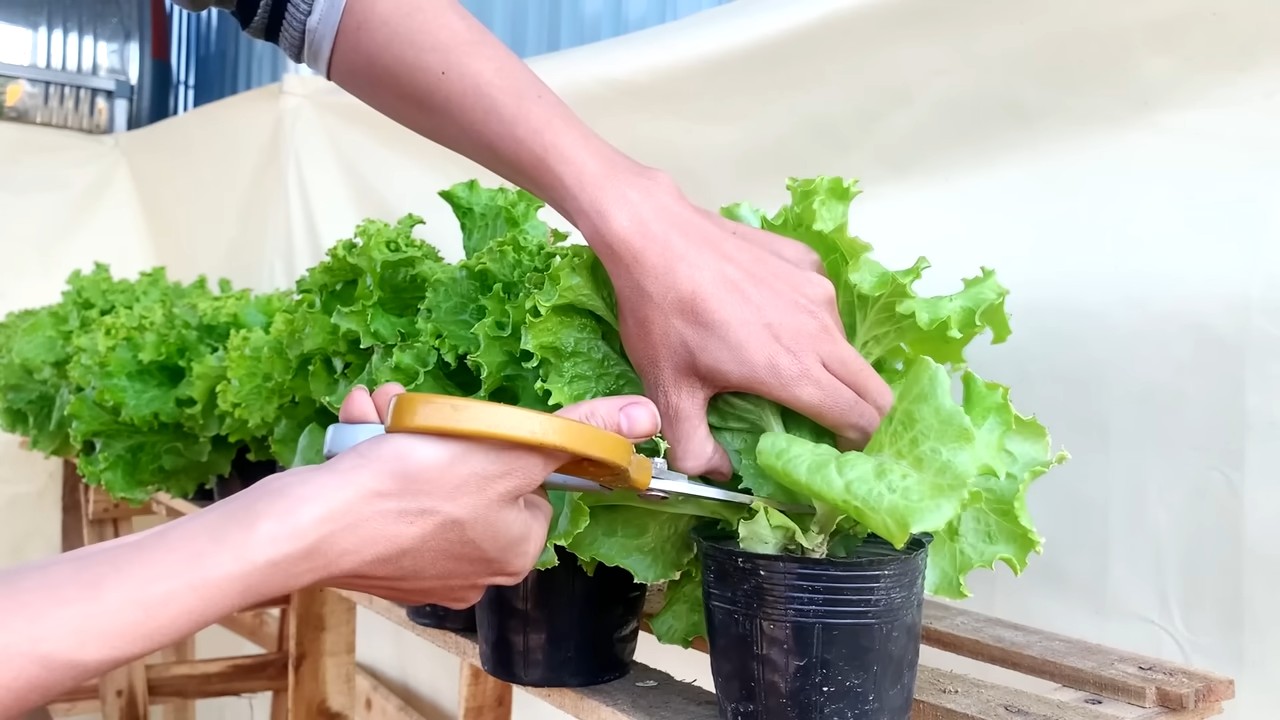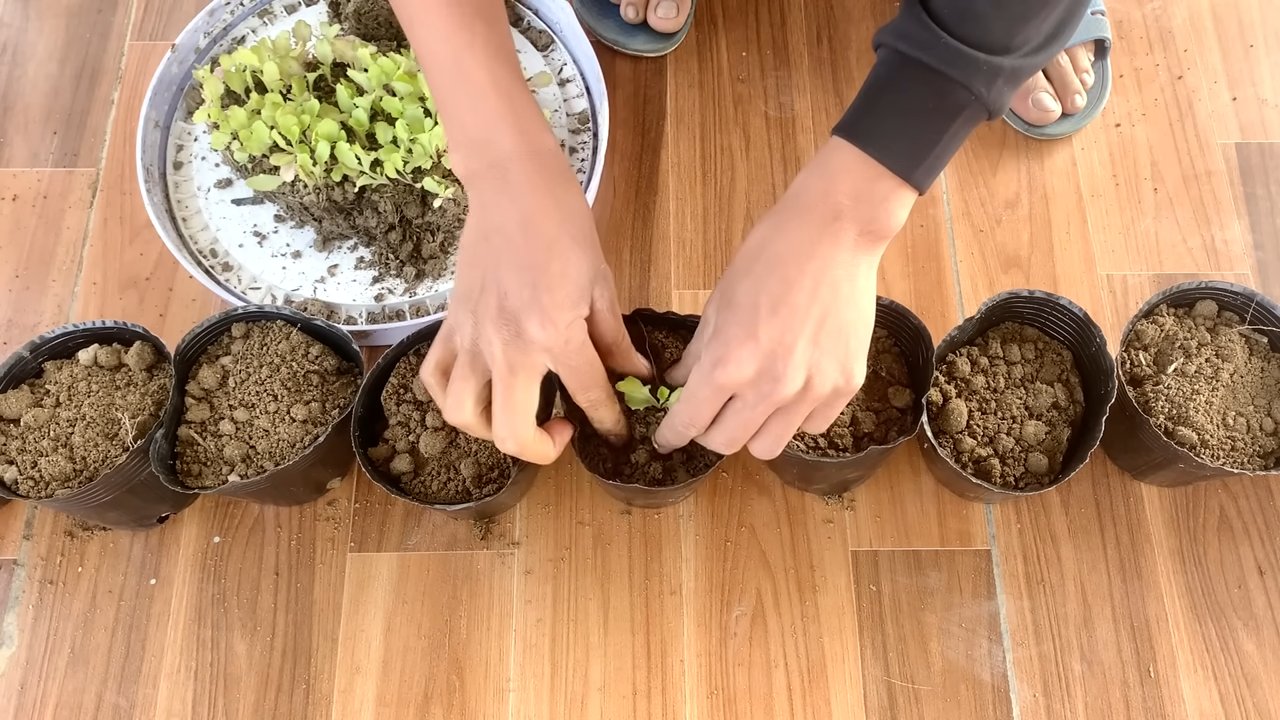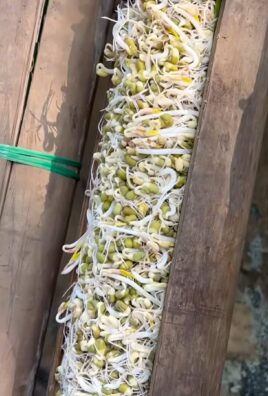Grow Lettuce Indoors? Absolutely! Imagine fresh, crisp lettuce, bursting with flavor, available right at your fingertips, no matter the season. Forget those sad, wilted greens from the grocery store – with a few simple tricks, you can cultivate a thriving lettuce patch right inside your home.
For centuries, humans have sought ways to extend the growing season and bring the bounty of the garden indoors. From ancient Roman greenhouses to the modern-day hydroponics systems, the desire for fresh produce year-round has driven innovation. Now, you can tap into that rich history with these easy DIY methods.
Why should you learn to grow lettuce indoors? Well, for starters, it’s incredibly rewarding! There’s nothing quite like the satisfaction of harvesting your own food. Plus, it’s a fantastic way to save money, reduce your carbon footprint, and ensure you’re eating healthy, pesticide-free greens. In this article, I’m going to share some of my favorite home gardening tricks and DIY hacks that will have you enjoying delicious, homegrown lettuce in no time. Get ready to ditch the store-bought stuff and embrace the joy of indoor gardening!

Growing Lettuce Indoors: Your DIY Guide for Fresh Greens All Year Round!
I love eating fresh lettuce, and what could be better than growing it yourself? And the best part: you don’t need a garden! With this DIY guide, I’ll show you how you can grow crisp lettuce in your own home all year long. It’s easier than you think, and super satisfying when you can enjoy your own harvest.
What You’ll Need: Your Shopping List for Indoor Lettuce
Before we get started, here is a list of the things you will need:
- Lettuce seeds: Choose varieties that are well-suited for indoor growing. Loose-leaf lettuce, Romaine (Baby Romaine), and leaf lettuce are good options. I personally like a mix of different varieties for more diversity.
- Seedling pots or trays: Small pots or trays are ideal for starting the seeds. You can also use recycled yogurt cups or egg cartons.
- Seed-starting mix: This soil is specially formulated for growing seedlings and contains fewer nutrients to promote root development.
- Planters: Larger pots (at least 15 cm / 6 inches in diameter) for the mature lettuce plants.
- Potting soil: Good potting soil with good drainage is important. You can also add some perlite or vermiculite to improve drainage.
- Grow light (optional, but recommended): Especially in the darker months, a grow light is worth its weight in gold to ensure your lettuce gets enough light.
- Spray bottle: For moistening the soil.
- Watering can: For watering the plants.
- Liquid fertilizer (optional): For additional growth, especially if you notice your plants are turning pale.
Phase 1: Germination – From Seed to Small Plant
Germination is the first and most important step. Here we lay the foundation for a successful lettuce harvest.
- Prepare the seedling pots: Fill your seedling pots or trays with seed-starting mix. Press the soil down lightly, but not too firmly.
- Sow the seeds: Distribute the lettuce seeds evenly over the soil. I usually sow 2-3 seeds per pot to ensure at least one germinates.
- Cover the seeds: Cover the seeds with a thin layer of seed-starting mix (about 0.5 cm / 0.2 inches).
- Moisten the soil: Gently moisten the soil with a spray bottle. The soil should be damp, but not soaked.
- Cover the pots (optional): You can cover the pots with plastic wrap or a clear lid to increase humidity. Be sure to air it out regularly to prevent mold.
- Place the pots: Place the pots in a warm and bright location. A windowsill with plenty of sunlight is ideal. If you are using a grow light, place the pots under it.
- Regular watering: Keep the soil moist, but not wet. Spray the soil regularly with water.
- Observe germination: The seeds should germinate within 7-14 days. Once the seedlings appear, remove the cover (if used).
Phase 2: Pricking Out – Giving the Small Plants More Space
Once the seedlings have a few leaves, it’s time to prick them out. This means we move the small plants into larger pots so they have more space to grow.
- Prepare the planters: Fill the planters with potting soil. Make sure the soil is loose and well-draining.
- Carefully remove the seedlings: Gently loosen the soil around the seedlings with a small spoon or fork. Carefully lift the seedlings out of the soil, being careful not to damage the roots.
- Place the seedlings in the planters: Make a small hole in the soil in the planters. Carefully place the seedlings in the holes and fill the holes with soil. Press the soil down lightly.
- Water the plants: Gently water the plants with a watering can. The soil should be moist, but not wet.
- Place the plants: Place the plants in a bright location. If you are using a grow light, place the plants under it.
Phase 3: Care – So Your Lettuce Thrives
Proper care is crucial for a bountiful harvest. Here are a few tips on how to keep your lettuce plants happy and healthy:
- Watering: Water your lettuce plants regularly, but avoid waterlogging. The soil should always be slightly moist. Check the soil regularly with your finger. If the top layer feels dry, it’s time to water.
- Lighting: Lettuce needs a lot of light to grow well. If you don’t have enough sunlight, use a grow light. Set the lamp to be on for 12-14 hours a day.
- Temperature: Lettuce prefers cool temperatures (15-20°C / 60-68°F). Avoid placing the plants near radiators or other heat sources.
- Fertilizing (optional): If you notice that your plants are turning pale or growing slowly, you can fertilize them with a liquid fertilizer. Use a fertilizer that is specifically for leafy greens. Follow the instructions on the packaging.
- Ventilation: Ensure good air circulation to prevent mold. Do not place the plants too close together and ventilate the room regularly.
- Pests: Watch out for pests like aphids or slugs. If you spot pests, you can combat them with a natural insecticide or by wiping the leaves with a damp cloth.
Phase 4: The Harvest – Finally, Fresh Lettuce!
This is the best part! You can harvest your lettuce as soon as the leaves are big enough.
- Harvesting the leaves: Cut the outer leaves with a knife or scissors. Leave the inner leaves so the plant can continue to grow.
- Regular harvesting: Harvest your lettuce regularly to encourage the growth of new leaves.
- Storing the lettuce: Wash the lettuce after harvesting and dry it thoroughly. Store it in an airtight container in the refrigerator.
Additional Tips and Tricks for Indoor Lettuce Growing
Observe your plants: Keep an eye on them daily to catch any issues like pests or wilting early on.
Choose the right variety: Not all lettuce varieties are suitable for indoor growing. Loose-leaf lettuce, Romaine (Baby Romaine), and leaf lettuce are good options.
Use high-quality soil: Good potting soil with good drainage is important. You can also add some perlite or vermiculite to improve drainage.
Pay attention to lighting: Lettuce needs a lot of light to grow well. If you don’t have enough sunlight, use a grow light.
Water correctly: Water your lettuce plants regularly, but avoid waterlogging.
Fertilize when needed: If you notice your plants are turning pale or growing slowly, you can fertilize them with a liquid fertilizer.

Conclusion
So, there you have it! Growing lettuce indoors is not only achievable, but it’s also a rewarding and surprisingly simple process. Forget those wilted, overpriced greens from the grocery store. Imagine stepping into your kitchen and harvesting fresh, crisp lettuce leaves whenever you need them. This DIY project is a game-changer for anyone who values fresh produce, sustainable living, or simply enjoys the satisfaction of nurturing something from seed to salad.
The benefits extend beyond just convenience. You have complete control over the growing environment, ensuring your lettuce is free from harmful pesticides and herbicides. Plus, you can tailor the growing conditions to optimize flavor and texture. Think about it: a continuous supply of your favorite lettuce varieties, grown right in your home, ready to be enjoyed in salads, sandwiches, or as a vibrant garnish.
But don’t just take our word for it. The real magic happens when you try it yourself. Experiment with different lettuce varieties – romaine, butterhead, loose-leaf – to discover your personal favorites. Consider adding a small fan to improve air circulation and prevent fungal diseases. You can even explore hydroponic systems for an even more efficient and space-saving approach to indoor lettuce cultivation.
We encourage you to embark on this green adventure. Start small, learn as you go, and don’t be afraid to experiment. The joy of harvesting your own homegrown lettuce is truly unparalleled. And most importantly, share your experiences! Let us know what worked for you, what challenges you faced, and any tips you discovered along the way. Your insights can help other aspiring indoor gardeners achieve success. Share your photos and stories on social media using #IndoorLettuceGarden and inspire others to embrace the joys of growing their own food. Let’s cultivate a community of indoor gardeners, one delicious lettuce leaf at a time. This method of **grow lettuce indoors** is a must try!
Frequently Asked Questions (FAQ)
Q: What type of lettuce grows best indoors?
A: Loose-leaf lettuce varieties, such as Black Seeded Simpson, Salad Bowl, and Red Sails, are generally the easiest to grow indoors. They mature quickly, don’t require a lot of space, and can be harvested continuously as needed. Butterhead varieties like Buttercrunch also perform well indoors. Romaine lettuce can be grown indoors, but it requires a bit more space and light. Experiment to find what works best for your setup!
Q: How much light does indoor lettuce need?
A: Lettuce needs at least 12-14 hours of light per day to thrive. Natural sunlight from a south-facing window can be sufficient, especially during the spring and summer months. However, during the fall and winter, or if you don’t have access to adequate natural light, you’ll need to supplement with artificial grow lights. LED grow lights are a great option because they are energy-efficient and provide the full spectrum of light that lettuce needs. Position the lights a few inches above the lettuce seedlings and adjust as they grow.
Q: What kind of soil should I use for growing lettuce indoors?
A: A well-draining potting mix is essential for growing lettuce indoors. Avoid using garden soil, as it can be too heavy and compact, leading to drainage problems. A good potting mix will retain moisture while still allowing excess water to drain away. You can also add perlite or vermiculite to improve drainage and aeration. Consider using an organic potting mix to ensure your lettuce is free from synthetic fertilizers and pesticides.
Q: How often should I water my indoor lettuce?
A: Lettuce needs consistent moisture, but it doesn’t like to be waterlogged. Water your lettuce when the top inch of soil feels dry to the touch. Water thoroughly, until water drains out of the bottom of the pot. Avoid overwatering, as this can lead to root rot. Check the soil moisture regularly, especially during hot or dry weather.
Q: What is the ideal temperature for growing lettuce indoors?
A: Lettuce prefers cooler temperatures, ideally between 60-70°F (15-21°C). Avoid placing your lettuce near heat sources, such as radiators or heating vents. If your home is too warm, you can try placing the lettuce in a cooler room or using a fan to circulate the air.
Q: How do I harvest lettuce from my indoor garden?
A: You can start harvesting lettuce leaves when they are about 4-6 inches long. For loose-leaf varieties, simply snip off the outer leaves as needed, leaving the inner leaves to continue growing. This is known as “cut-and-come-again” harvesting. For head lettuce varieties, you can harvest the entire head when it is fully formed.
Q: How can I prevent pests and diseases in my indoor lettuce garden?
A: One of the advantages of growing lettuce indoors is that it is less susceptible to pests and diseases than outdoor gardens. However, it’s still important to take precautions. Inspect your lettuce plants regularly for any signs of pests, such as aphids or spider mites. If you find any pests, you can try washing them off with a strong stream of water or using an insecticidal soap. To prevent fungal diseases, ensure good air circulation and avoid overwatering.
Q: Can I grow lettuce indoors year-round?
A: Yes, you can grow lettuce indoors year-round, as long as you provide adequate light and temperature. With the help of grow lights, you can maintain a consistent growing environment regardless of the season.
Q: How long does it take for lettuce to grow indoors?
A: Lettuce typically takes 30-60 days to mature, depending on the variety and growing conditions. Loose-leaf varieties tend to mature faster than head lettuce varieties. You can start harvesting leaves as soon as they are large enough to eat.
Q: Can I grow lettuce from seed indoors?
A: Absolutely! Starting lettuce from seed indoors is a great way to save money and have more control over the growing process. Sow the seeds in a seed-starting tray or small pots filled with seed-starting mix. Keep the soil moist and warm, and the seeds should germinate within a few days. Once the seedlings have developed a few true leaves, you can transplant them into larger pots.





Leave a Comment